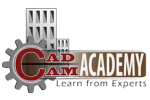Structural Analysis Services at CADCAM Academy – Learn from an Experts
At CADCAM Academy Bhubaneswar, we take pride in being the top-ranking institute for CAD, CAM, GIS, BIM, and PPM courses in Odisha. Alongside our extensive training programs, we also deliver specialized Structural Analysis services for academic, industrial, and corporate projects. Our goal is to combine professional expertise with cutting-edge software tools, enabling students, engineers, and organizations to achieve efficient, accurate, and safe structural design solutions.
Structural Analysis plays a crucial role in the civil engineering and construction industry, where precise calculations and reliable models form the foundation of any building or infrastructure project. At CADCAM Academy, we bridge the gap between academic learning and practical application by providing project-based Structural Analysis training and real-time structural design services.
Why Choose CADCAM Academy for Structural Analysis?
Industry-Focused Training – Our curriculum integrates modern structural engineering software like ETABS, STAAD Pro, SAP2000, RCDC, and Revit Structure.
Expert Mentorship – With the tagline Learn from an Experts, our faculty led by Dr. Swadesh Muduli brings unmatched industry knowledge.
Practical Application – Every training and service project is handled with real-world case studies, ensuring students gain exposure to actual structural challenges.
Advanced Tools & Technology – We implement CAD, BIM, and PPM methodologies, ensuring each design meets international standards of accuracy and safety.
Customized Structural Design Services – From residential to commercial to infrastructure projects, we offer tailor-made analysis solutions.
Scope of Structural Analysis Services
Our Structural Analysis services extend across multiple project domains:
Building Design – Structural analysis of high-rise buildings, residential complexes, and commercial structures.
Industrial Projects – Steel structures, manufacturing units, and plant layouts requiring robust load-bearing capacity.
Infrastructure Development – Bridges, flyovers, and road projects where precision in analysis is critical.
Seismic & Wind Analysis – Safety assessments to ensure structures remain resilient under natural forces.
Retrofitting & Rehabilitation – Structural studies of old buildings for strengthening and modernization.
Project Documentation – Delivering detailed drawings, analysis reports, and BIM-enabled structural models.
These services are backed by our strong academic-industry collaboration, ensuring clients and students gain both technical and practical value.
Software Expertise in Structural Analysis
We ensure our students and clients benefit from the latest structural engineering software:
ETABS – For multi-story building analysis and design.
STAAD.Pro – Widely used for structural modeling of both steel and concrete structures.
RCDC – For advanced reinforced concrete detailing and design.
Revit Structure – For BIM-enabled structural modeling and collaboration.
SAP2000 – For complex structural dynamics and analysis.
By mastering these tools, students of CADCAM Academy Bhubaneswar gain a competitive edge in the engineering job market.
Explore our ETABS Training Course
Learn STAAD.Pro with Real Projects
Join Revit Structure BIM Program
(Internal links will strengthen SEO while guiding visitors to relevant course pages.)
Benefits of Learning Structural Analysis at CADCAM Academy
Hands-On Learning – Students practice on live projects instead of just theory.
Certification – Industry-recognized certificates add value to career growth.
Resume Building – Structured assignments and portfolio preparation under expert guidance.
Job Opportunities – Our dedicated placement assistance connects students to top construction and design firms.
Corporate Training – Tailor-made programs for companies looking to upskill their workforce in structural engineering software.
Structural Analysis for Professional Projects
Beyond education, CADCAM Academy partners with architects, builders, and infrastructure firms to provide structural design consultancy services. This includes:
Structural safety checks before construction approval.
Design optimization for cost-effective materials usage.
BIM-based collaborative modeling for coordination between architects, engineers, and contractors.
Compliance with IS Codes and international standards.
This unique approach positions CADCAM Academy Bhubaneswar not just as a training institute, but also as a professional structural consultancy hub.
Who Can Benefit from Structural Analysis Training and Services?
Civil Engineering Students – Gain practical knowledge for academic and professional excellence.
Working Engineers – Upskill to meet evolving industry demands.
Construction Firms – Outsource structural design analysis for faster project delivery.
Government Projects – Ensure compliance with safety and design codes.
Corporate Teams – Train employees in the latest structural analysis software for productivity.
Why Structural Analysis is Essential in Modern Construction?
In today’s competitive construction industry, structural analysis is not optional – it is the backbone of safe and sustainable development. With rising demand for smart cities, metro projects, and modern infrastructure, engineers with expertise in structural design and BIM will continue to remain in high demand.
CADCAM Academy ensures that every learner understands:
Load distribution and material behavior.
Integration of CAD and BIM technologies.
Structural dynamics under environmental loads.
Safety, sustainability, and cost-effectiveness in design.
Conclusion – Learn Structural Analysis from an Experts
Whether you are a student, a working professional, or an organization, CADCAM Academy Bhubaneswar offers the most comprehensive Structural Analysis training and services in Odisha. With a strong focus on practical projects, advanced software, and expert guidance, we empower learners and clients to excel in the world of structural design and engineering.


 Palasuni, Rasulgarh, Bhubaneswa
Palasuni, Rasulgarh, Bhubaneswa